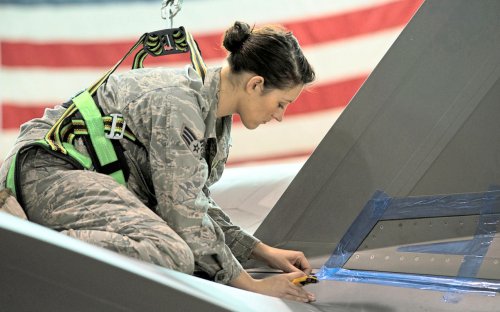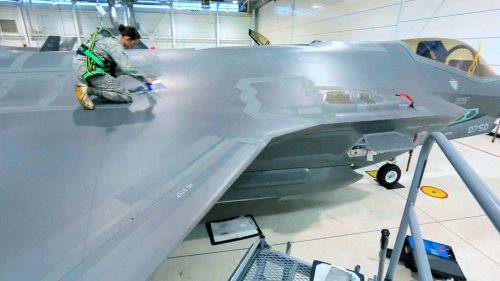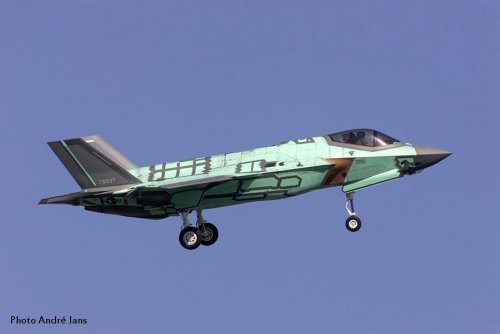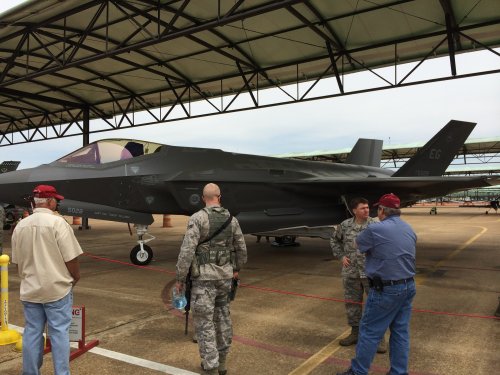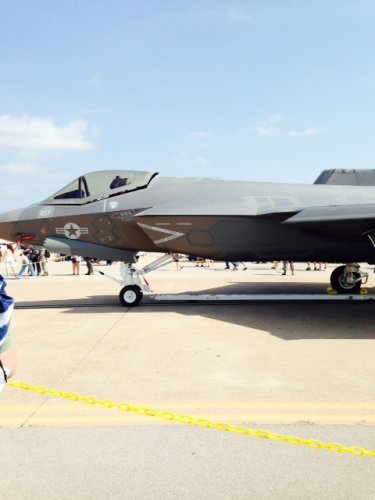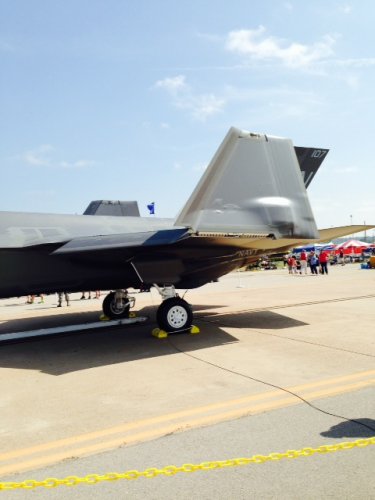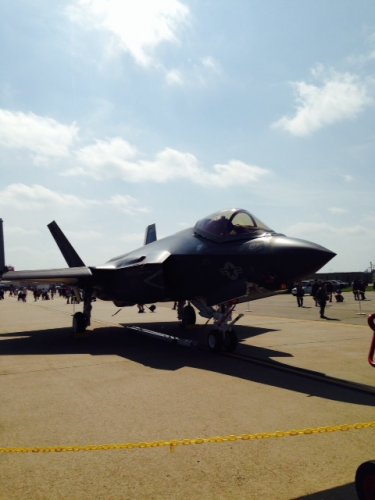Australia Likely To Order More F-35s
By Bradley Perrett
Aviation Week & Space Technology
Australia is likely to commit to buying 58 more Lockheed Martin F-35 Lightnings this month, setting aside the alternative of consolidating its combat aircraft squadrons on the Boeing F/A-18E/F Super Hornet. The decision will increase the country's total commitment to 72 F-35s and expand the Royal Australian Air Force's fast-jet fleet, counting a separate order for 12 EA-18G Growler electronic attack aircraft as additional to, not part of, the fighter force renewal.
The defense department has recommended the F-35 order, probably worth around $8 billion, and the proposal has the endorsement of a leading think-tank. The government shows every sign of accepting the recommendation, says a source closely connected to the authorities. Accordingly, Lockheed Martin has probably escaped the danger of losing one of its largest F-35 customers, one that has already backed away from an original requirement for about 100 of the stealthy fighters. Even the risk that Australia could trim its commitment a little further now looks low, although that option was suggested by the Australian Strategic Policy Institute think-tank.
The Royal Australian Air Force's (RAAF) originally simple and logistically attractive plan to buy about 100 F-35s to replace a similar number of F-111s and F/A-18A/B Hornets was thwarted by delays to the F-35 program, unexpectedly early retirement of F-111 strike bombers in 2010 and a decision last year to buy Growlers. With 24 Super Hornets having replaced the F-111s and no longer considered stopgaps, the issue now is how to replace the 71 surviving Hornets, which will run out of airframe life around 2020.
The official answer has always been the F-35, but the introduction of Super Hornets into service has presented a clear alternative: Australia has had the choice of buying more of the Boeing fighters and waiting for F-35 to look dependable, or giving up on the stealth fighter and going for a homogenous Super Hornet fleet.
Canberra has already ordered two F-35s and committed itself to another 12, though the latter are not under contract. “In the near future” the government will consider a defense department recommendation that it authorize an order for another 58, making for a total of 72, say the institute's analysts Andrew Davies and Harry White. According to the source, the cabinet will decide the issue around mid-month, though delays in government decision-making are always possible.
“On balance, the decision that appears to meet government priorities for capability, industry participation and alliance management with the U.S. seems to be a further purchase of the F-35,” write Davies and White. They point particularly to what they see as increasing stability in the F-35 program, giving confidence that Lockheed Martin can deliver aircraft in time to replace the Hornets—though only just in time. The department has scheduled the F-35 to become initially operational with the RAAF in 2020; the analysts think the target can be achieved, but more big delays in the F-35's development and deliveries would leave the country with a debilitated fighter force for some period.
The analysis does not consider the great boost to the air force's capabilities that will come when 12 Growlers become operational in 2018. The Growlers could be regarded as part of the combat-aircraft renewal effort, bolstering the case for trimming the F-35 order, but the air force has argued that they are support aircraft and therefore separate. In effect, it hopes the Growlers will increase its fleet.
If the government does buy 58 F-35s, then the RAAF will have a fast-jet force of 72 Lightnings, 24 Super Hornets and 12 Growlers, not counting BAE Systems Hawk lead-in fighter trainers. The total of 108 is about 10% higher than the 1980s levels that previous policy has consistently sought to maintain. Unlike other Western countries, Australia has not felt more secure since the end of the Cold War, and in general has not cut its forces. It has added important capabilities such as airborne early warning, in-flight refueling and over-the-horizon radar. Fast population growth and 23 years of unbroken economic expansion have helped, although defense spending has lately been a historically small fraction of GDP.
While recommending more F-35s, the think-tank says that replacing the Hornets with more Super Hornets, and perhaps backing out of the F-35 program completely, would produce an adequate force. “Super Hornets and the other enabling elements of air combat capability (air-to-air refuelers, airborne early warning and . . . over-the-horizon radar) would be likely to provide Australia with a sufficiently robust air combat capability for the next couple of decades,” it says. Further, the economy of consolidating on Super Hornets and Growlers might justify enlarging the force by a few aircraft.
“But in the strike-fighter role, the F-35 is a far more capable aircraft than the Super Hornet and would give greater capability against a more capable adversary, including the ability to penetrate sophisticated air defenses,” says the think-tank. The F-35 would also be more resistant to obsolescence. Moreover, backing out of the order would be harmful to Australia's alliance with the U.S. and would take away business opportunities for Australian companies participating in the program.
Among the Australian suppliers to the F-35 program, engineering company Marand is building tail fins. The company delivered its first ship set on March 31. BAE Systems Australia, also involved in making the tail, said on April 1 it had commissioned a machine tool for making long spars and longerons. Composite-parts maker Quickstep has delivered more than 200 high-grade carbon-fiber components and is ramping up production with its out-of-autoclave process.
The think-tank's analysis assumes a unit cost for the F-35 of $90 million in 2019, lower than the Joint Strike Fighter program office's forecast of $97 million because the program's estimates have been trending down. Another 50% can be assumed for other acquisition costs, such as support equipment, and running costs over two decades of twice the acquisition cost, the think tank says. That implies that Australia will spend almost $10 billion to buy 72 aircraft, including the two already on order, and the April decision for 58 will be worth a little more than $8 billion. Operating the 72 aircraft until around 2040 should cost about $20 billion and then more after that.
The air force has probably only set aside, not given up, its ultimate aim for about 100 F-35s. By 2030, the Super Hornets will be 20 years old, an age that could justify retirement and replacement by F-35s. Twelve of the Super Hornets are wired for EA-18G configuration, so they could be kept and mixed into the Growler force to share airframe wear and tear and extend the life of the electronic attack capability; equipment could be moved between airframes during overhauls, as well. RAAF officers have suggested that the small Growler fleet could rely on U.S. Navy support, minimizing the expense of operating it alongside the main fleet of F-35s.

